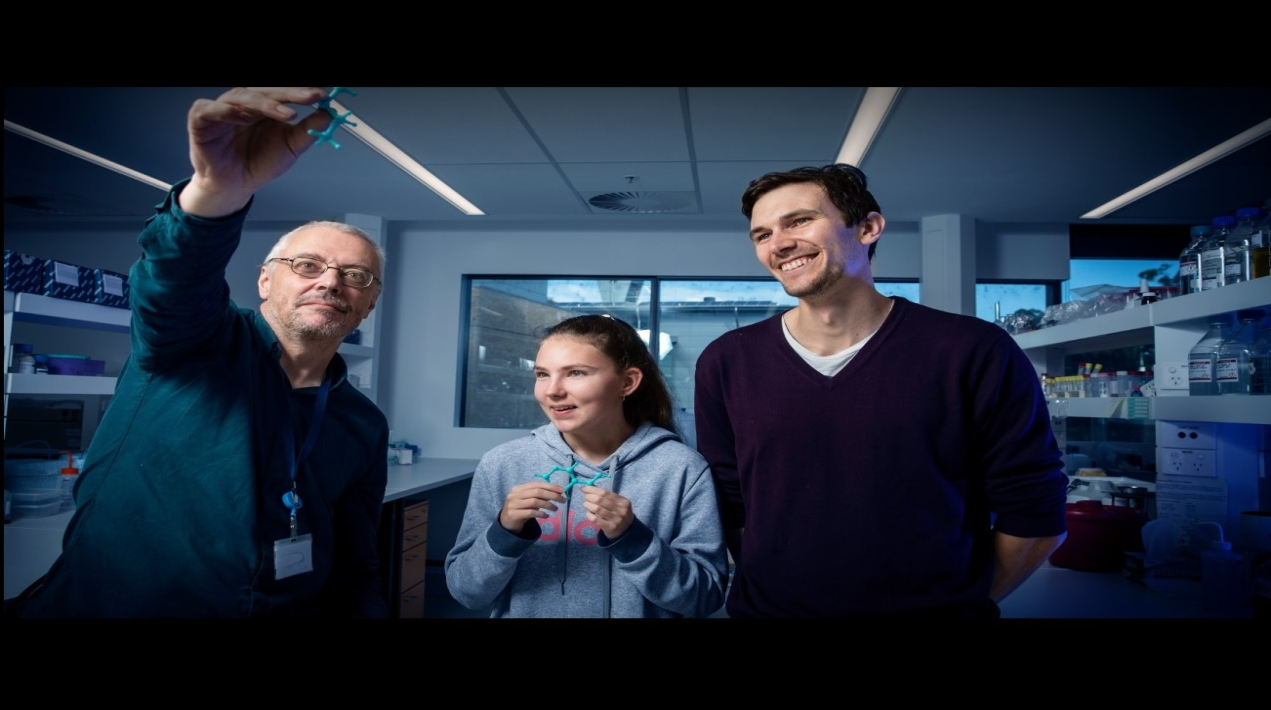
It can be difficult to learn the complexities of the body’s chemistry for many students to grasp. A majority of their learning is based on being able to visualise the structure and composition of the molecules that comprise the body. Moreover, students who have visual impairments may miss out on vital information. Thus, Associate Professor Oakley, from the University of Wollongong’s (UOW) Molecular Horizons, began developing a collection of 3D-printed models of the molecules of the body, called ChemBraille, to enable students to learn through touch.
Associate Professor Oakley shared that the body is made up of molecules, such as protein, amino acids, and vitamins. One of the best ways to understand the molecular biology of the body is to visualise it, which is why imagery is used in teaching extensively. Having an idea of the shape and structure of the molecules provides information on how it works.
The Professor has been using 3D printing for several years to create physical models of the Molecules that can be displayed on a computer screen, but a physical model is even better. So he developed a simple way to convert the available structural data into something that can be 3D printed.
When he discovered there was going to be a vision-impaired student in his food chemistry class in the autumn session, it seemed an obvious application to assist her to learn about molecule structure, he said.
ChemBraile was created with a set of 3D-printed molecules, which use tactile features to signify the different components of the molecules. All the information that would be present in an image, that would help the student to understand the structure of a molecule, is included in the 3D-printed models.
To assist the students within his classes who are vision-impaired, the Associate Professor 3D printed a full set of molecules, including the 20 amino acids that comprise our proteins. While he said that the idea is not completely original, it is the first time that he has heard of a lecturer systematically creating physical models to help students. In this way, education is made much more accessible. The models have been given to two students in his classes who have vision impairment and both have found them very helpful.
In similar news, a team of US-based chemists developed a method for converting scientific charts and images into tactile materials making them accessible to blind and visually impaired researchers. This novel technology is hoped to lessen the barriers people with low vision who want to study and work in science face.
The team, led by Baylor University biochemist Bryan Shaw, used 3D printing techniques to convert scientific images into thin 3D constructions called lithophanes, presenting high-resolution data in a form that visually impaired people can interpret. A basic 3D printer was bought for $3500 and pictures were converted into tactile graphics. The team developed a method to make the sheets as thin as possible to reduce the amount of material used as well as make production more rapid.
“When you held them up to the light, they lit up just like the picture on the computer screen – they looked picture perfect,” said Shaw. This prompted the team to think about developing a universal visualisation tool so that blind and sighted people can sit around and share the same piece of data.
The researchers used their method to 3D print UV–vis and mass spectra, gel electropherograms of proteins, textbook illustrations and micrographs of a butterfly chitin scale. They then compared how well groups of blind, blindfolded and sighted students and researchers were able to interpret the data. The blind chemists scored at least as well as their sighted counterparts in the vast majority of the questions.
It is hoped that the technology can be improved to make it easier for blind researchers to print the lithophanes themselves, directly from journal articles. Shaw said he would like to see it automated. “It would be great if we could team up with some computer scientists, and we could click on an image in a paper and have it come out in the 3D printer, just like it does in a normal printer,” he said.
















